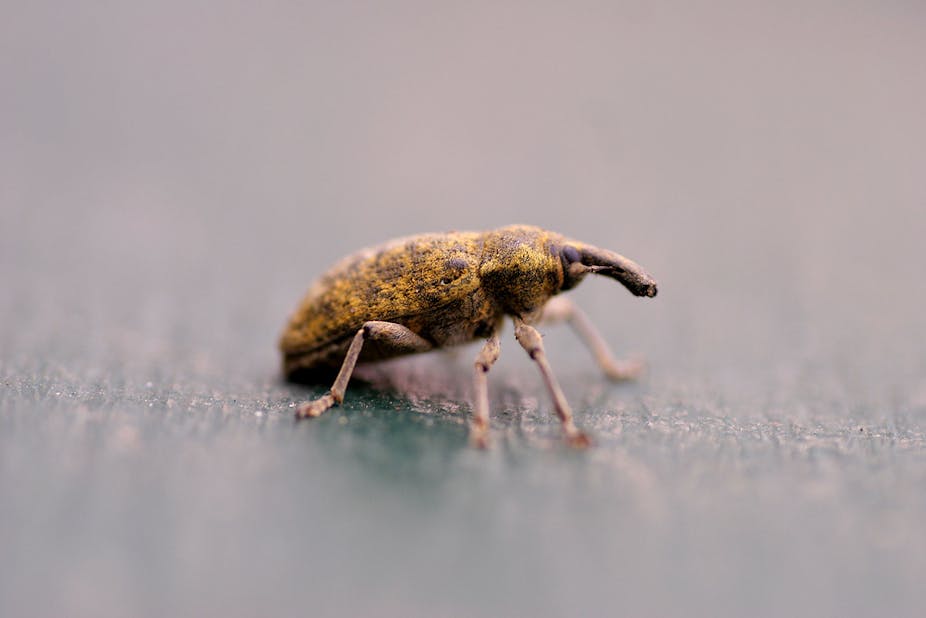At current levels of funding, it is not possible to save all threatened species in Australia from extinction. Trade-offs are required. For example, managers could concentrate efforts on the most threatened species. But the price we would pay is that more species will slip onto the threatened species list, and few if any species will be removed from that list.
Alternatively, managers could let the most threatened species go extinct, and concentrate on recovering less-threatened species or stopping other species becoming threatened. But with the money available now, it is not possible to do both.
The technical aspects of this trade-off are relatively straight-forward. For example, recent research has estimated the effectiveness of different management actions to save species in the Kimberley. It seems we have a fair chance of saving Australia’s only intact mammal fauna for $40 million per annum.
The effectiveness of conservation spending on threatened Australian birds has also been estimated; we seem good at reducing further declines but have trouble achieving recovery.

However, how should the decline of one species be weighed against the extinction of another? Or, indeed, how happy would we be if we could keep a species forever in zoos, in contrast to that species having a small chance of persisting in the wild? If preventing the extinction of species is emphasised to the exclusion of preventing declines or promoting recovery, then we are implicitly committed to an increasing number of threatened species.
The best way to allocate effort among species depends a lot on what is valued. It depends on how we value declines versus functional extinction (when a species persists but is well below its normal abundance) and extinction, but also how we value the extinction of one species versus another.
The realm of values is not really a technical issue but a social one: the public largely funds the conservation of species and benefits from their persistence, so it should be for the public to decide what it values. Therefore, the public has a critical role in determining how limited conservation resources are spent.
Unfortunately, nationally and internationally, there has been little public discussion about values in species conservation. Such a discussion is critical, but it needs to be informed to avoid surprises. Without an informed discussion, we might find that only the cutest species are given the highest priority, while some species that are vitally important for ecosystem function could be neglected if they are less charismatic. Fungi, bats and invertebrates come to mind as examples of potentially neglected groups of species that are nevertheless important to the ecosystems on which humans rely.

A simple way of getting a numerical “value” for a species is to google its name and see how many hits you get – arguably this is how much society is interested in that species. But this tells you nothing about its role in an ecosystem nor how important it might be from an evolutionary perspective - this is where platypuses and echidnas win.
The idea of determining which species to save is referred to as conservation triage, borrowing from medical triage that was used during World War I to determine the level of medical effort for different casualties. The aim was to save the most lives with the limited medical resources available. Casualties who would be likely to live or die regardless of the level of urgent medical attention were given less emphasis. Priority was given to those individuals whose outcomes would be greatly improved by immediate medical assistance.
Conservation triage is analogous to medical triage, but it also reflects the fact that not all species are equally valued. For example, efforts to prevent extinction of Anopheles mosquitoes that transmit the malaria parasite would receive little support regardless of how effective those efforts might be. Further, there are degrees of persistence to consider; species close to extinction might be already functionally extinct, and not playing an important role in the ecosystem. Alternatively, the persistence of the last few individuals of a species is often valued very highly, even inspiring books and radio and television series. It appears that some species are indeed more equal than others.
Species triage essentially boils down to answering a few basic questions:
How much is the rate of extinction, decline and recovery of different species influenced by the resources that are spent?
What is the budget available to allocate among species?
Are there any opportunities available to improve conservation of multiple species or increase the available funding?
How does the public value different species, and how does the public weigh extinctions of species against further decline and recovery?

This last question essentially determines the management objective – what the public wants to achieve with the available budget. Then it is a matter of determining which species are funded and the level of funding that optimizes this management objective.
Of course, to alleviate some difficulties of trading off among species we can simply spend more on species conservation. For example, approximately $3 million is spent annually on conserving threatened Australian birds. This is less than 1% of the weekly defence budget for Australia. Our research suggests that tripling the resources allocated to Australia’s threatened bird species could reduce the number of extinctions over the next 80 years to almost zero, and reduce the number of threatened species by about 15%.
To make this trade-off of costs explicit, consider the following. If Australia didn’t fly one of its FA18 fighter bombers for six months per year then we would save enough money to prevent the extinction of all of Australia’s bird species over the next 80 years. We would also have a good chance of recovering 15% of them well enough to remove them from the threatened species list.
This is one way that we can help secure Australia’s future, by improving the chances that our children, grandchildren, and great grandchildren can enjoy and benefit from our unique biodiversity.


